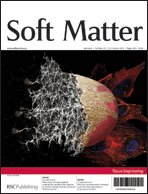The biomaterials community is faced with the challenge of imitating a vastly complex, physiological tissue environment. While cellular systems towards this end have been traditionally studied in two dimensions (2D), most cells require three-dimensional (3D) cues to produce a physiologically relevant response. Two-photon absorption laser scanning lithography (TPA-LSL) may be applied to photosensitive hydrogel systems to engineer heterogeneous, 3D microenvironments consisting of precisely patterned bioactive signals. In this work, we have developed new operating parameters and system capabilities for TPA-LSL through the patterning of fluorescently labeled monoacrylate PEG-RGDS within PEG-DA hydrogels. Specifically, we have demonstrated a flexible pattern size range, with features ranging from 1 µm to nearly 1 mm. We have also shown patterns of differing concentrations of the cell adhesive ligand RGDS and correlated observed RGDS fluorescence with laser scan speed and intensity. Finally, we have micropatterned multiple, unique bioactive ligands into distinct, 3D forms within a single hydrogel. The results presented here have significantly developed the capabilities of the TPA-LSL micropatterning technique to allow for the fabrication of heterogeneous, 3D cellular microenvironments, which should prove highly useful for future biomimetic applications.

You have access to this article
 Please wait while we load your content...
Something went wrong. Try again?
Please wait while we load your content...
Something went wrong. Try again?


 Please wait while we load your content...
Please wait while we load your content...